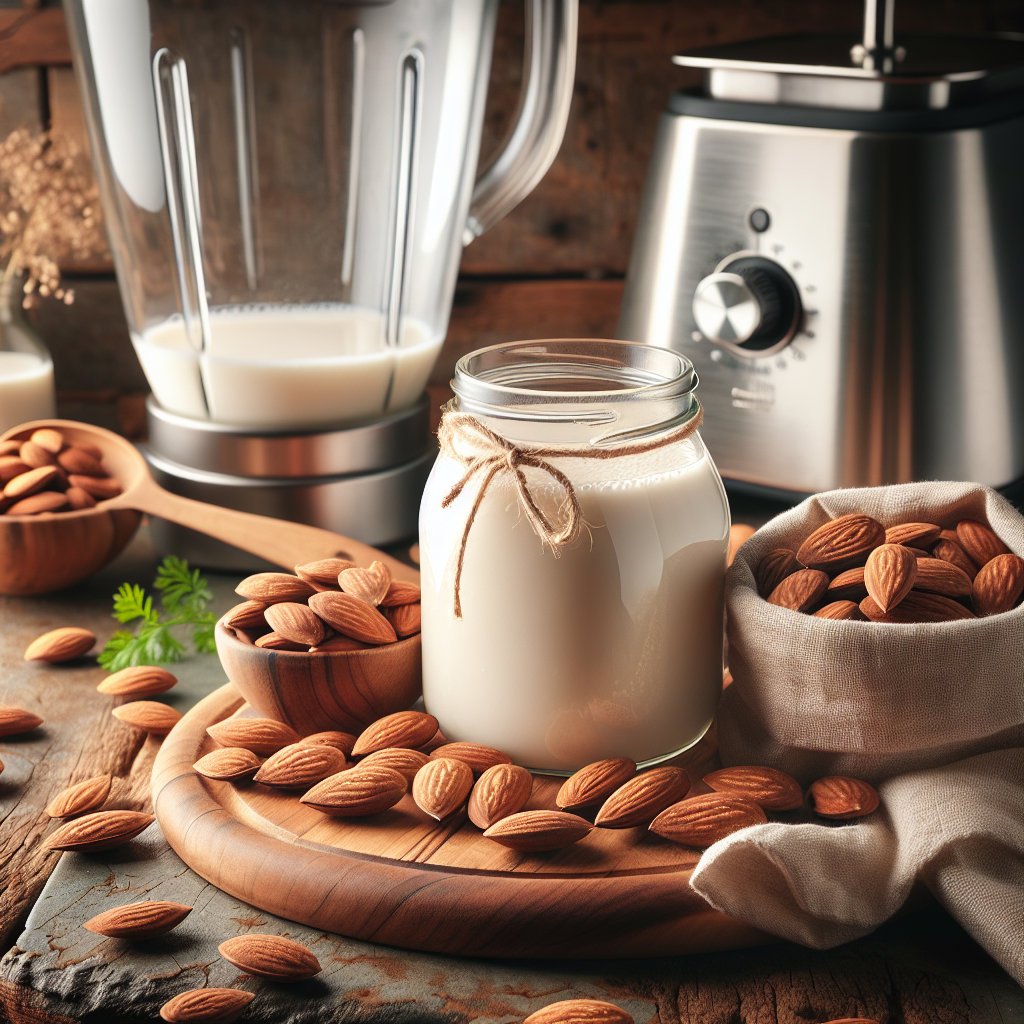Making your own almond milk at home is simpler than you might think. With just two ingredients and a few minutes of prep time, you can enjoy a creamy, additive-free alternative to store-bought versions. Unlike commercial almond milk, which often contains thickeners, stabilizers, and added sugars, homemade almond milk is pure, nutritious, and customizable to your taste preferences. Here’s everything you need to know to whip up a fresh batch in your own kitchen.
Why Make Your Own Almond Milk?
Store-bought almond milk is convenient, but it often contains unnecessary additives like carrageenan, sunflower lecithin, and synthetic vitamins. By making it yourself, you can ensure your milk is free from preservatives and made with high-quality, organic ingredients. Plus, homemade almond milk tastes fresher and creamier than its packaged counterpart.
Benefits of Homemade Almond Milk
- No additives: Avoid gums, emulsifiers, and artificial flavors.
- Better taste: Fresher and creamier than store-bought versions.
- Customizable: Adjust sweetness and flavor to your liking.
- Eco-friendly: Reduces packaging waste from cartons.
Ingredients You’ll Need
You only need two basic ingredients to make almond milk at home:
- 1 cup raw organic almonds (preferably soaked)
- 4 cups filtered water
Optional additions:
- 1-2 pitted dates or 1 tbsp maple syrup for sweetness
- ½ tsp vanilla extract
- A pinch of sea salt
Step-by-Step Instructions
1. Soak the Almonds
Start by soaking the almonds in water for 8–12 hours or overnight. Soaking softens the nuts, making them easier to blend and improving digestibility. Drain and rinse them thoroughly before use.
2. Blend with Water
Add the soaked almonds and 4 cups of fresh filtered water to a high-speed blender. For a creamier texture, use 3 cups of water instead. Blend on high for 1–2 minutes until smooth and frothy.
3. Strain the Milk
Place a nut milk bag or a fine-mesh strainer lined with cheesecloth over a large bowl. Pour the blended almond mixture through the bag or strainer, squeezing firmly to extract all the liquid. Discard the leftover pulp or save it for baking.
4. Sweeten & Flavor (Optional)
If desired, return the strained milk to the blender and add sweeteners like dates or vanilla. Blend again briefly to combine. Taste and adjust flavors as needed.
5. Store Properly
Transfer the almond milk to a glass jar or bottle and refrigerate. Homemade almond milk lasts 4–5 days when stored cold. Shake well before each use, as natural separation may occur.
Tips for the Best Almond Milk
- Use organic almonds to avoid pesticide residues.
- For extra richness, blend in a tablespoon of coconut oil.
- Add a pinch of cinnamon or cacao powder for flavored variations.
- Freeze almond milk in ice cube trays for smoothies.
Creative Ways to Use Leftover Almond Pulp
Don’t throw away the leftover almond pulp! It can be repurposed in:
- Baking: Add to muffins, cookies, or energy balls.
- Granola: Mix into homemade granola for extra texture.
- Face scrub: Combine with honey for a natural exfoliant.
Frequently Asked Questions
Is homemade almond milk healthier than store-bought?
Yes! Homemade almond milk contains no additives, fillers, or artificial ingredients, making it a cleaner, more nutritious choice.
Can I make almond milk without a nut milk bag?
If you don’t have a nut milk bag, a fine-mesh strainer lined with cheesecloth or even a clean dish towel will work.
Why does my almond milk separate?
Separation is natural—just shake before using. Store-bought versions use emulsifiers to prevent this, but homemade milk is free of those additives.
Now that you know how simple it is to make your own almond milk, ditch the store-bought cartons and enjoy pure, homemade goodness instead!
